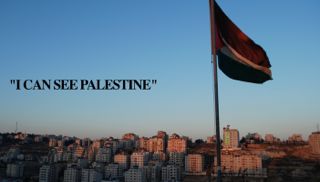For the residents of the Occupied Territories, particularly West Bank residents,
sweeping restrictions on freedom of movement are not a new phenomenon.
Since the early 1990s, Israel has gradually and steadily expanded and refined
its movement restrictions’ policy. Until 1991, Israel allowed all Palestinians from
the Occupied Territories ? except for a relatively small group of persons who
were classified as security threats ? to enter and stay in Israel during daytime
hours. From time to time, Israeli security forces set up checkpoints in the West
Bank to capture wanted persons and imposed restrictions on Palestinians wanting
to go abroad. This ability to move around was a crucial factor in the creation of a
Palestinian economy that depended heavily on Israel’s economy. It also aided in
the establishment of social, cultural, and commercial ties between the West Bank
and Gaza and with Palestinian citizens of Israel.
In January 1991, during the first Gulf War, Israel changed its policy: the general
permit was cancelled and every resident of the Occupied Territories needed an
individual permit to enter Israel or East Jerusalem, which Israel had annexed in
1967. To enforce its new policy, Israel set up checkpoints at the crossing points
between the Occupied Territories and Israel. These checkpoints have remained,
in one form or another, until the present day. In March 1993, following the killing
of nine Israeli civilians and six security forces by Palestinian residents of the
Occupied Territories, Israel declared a general closure on the Occupied Territories
“until further notice.” This declaration institutionalized the measure that Israel
had taken two years earlier. In implementing its policy, Israel issued entry permits
sparingly, based on unannounced criteria. In addition to the harm caused to the
Palestinian economy, especially to the families of Palestinians who had worked
in Israel and lost their jobs, the closure split the Occupied Territories into three
areas: East Jerusalem, the rest of the West Bank, and the Gaza Strip. With the
outbreak of the second intifada, Israel imposed more stringent restrictions on
entry into Israel and on movement between the three areas.
A gradual gnawing away at Palestinian freedom of movement had begun in the
West Bank long before the second intifada. Two main reasons led to the splitting
of the West Bank and the restrictions on freedom of movement. The first was the
ever-expanding settlement enterprise, which spread along the length and breadth
of the West Bank. The very existence of the settlements did not generally restrict
Palestinian movement. In many instances, however, the site of the settlement
was chosen to thwart the expansion of Palestinian cities. In addition, the building
of a network of bypass roads, running between the settlements and between the
settlements and Israel, accelerated the cutting up of the West Bank. Unlike the
settlements, the road network did bring about a separation of Palestinian villages
and of Palestinians from their farmland and from the major towns. As will be
shown below, the settlement enterprise, including the roads built for it, was one
of the primary factors in shaping the restrictions regime that Israel has forced on
the Palestinians since the beginning of the second intifada and which forms the
focus of this report.
To download the full report please click below:
| Attachment | Size |
|---|---|
| 200708_Ground_to_a_Halt_Eng.pdf | 5.7 MB |
B’Tselem - August 25, 2009 - Back to Resources Page
Did we miss something?
Click here to suggest a state building resource to be added to our fast-growing archive!
















